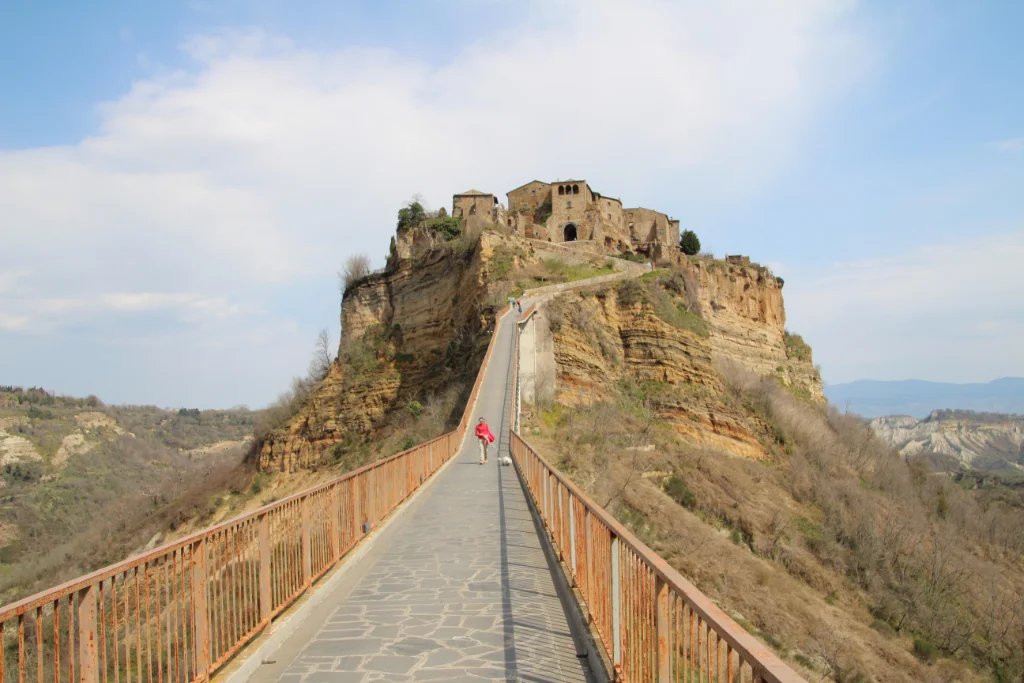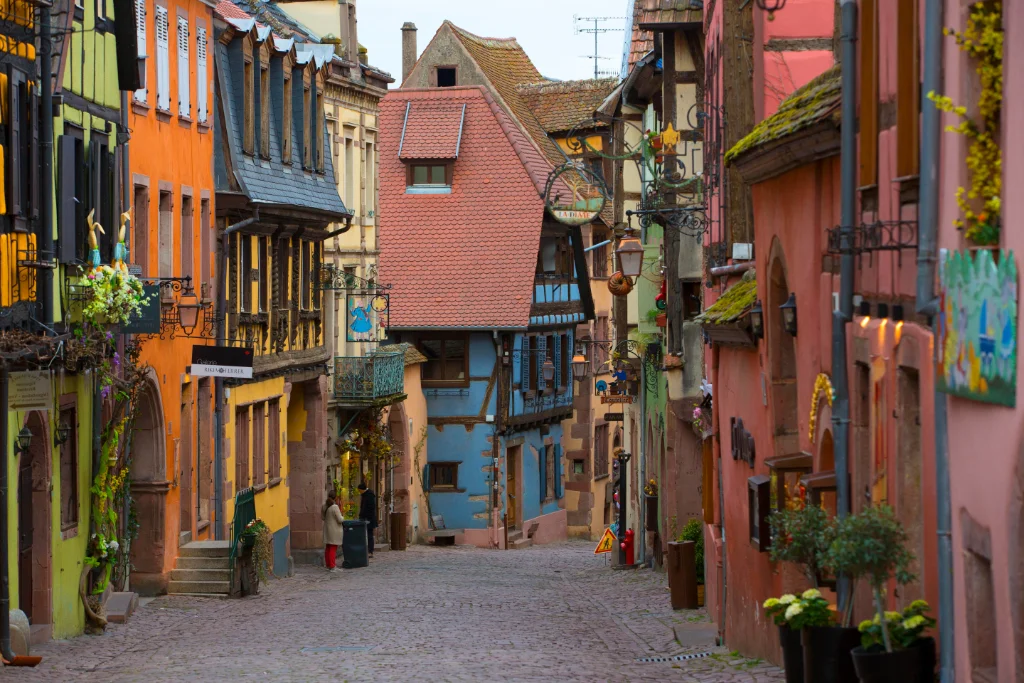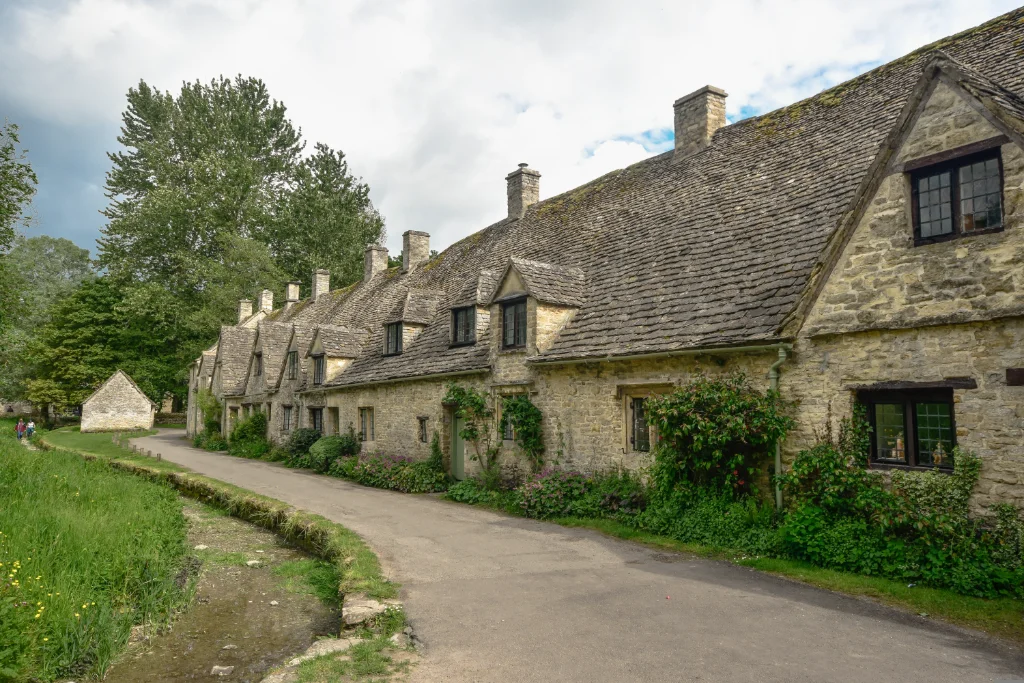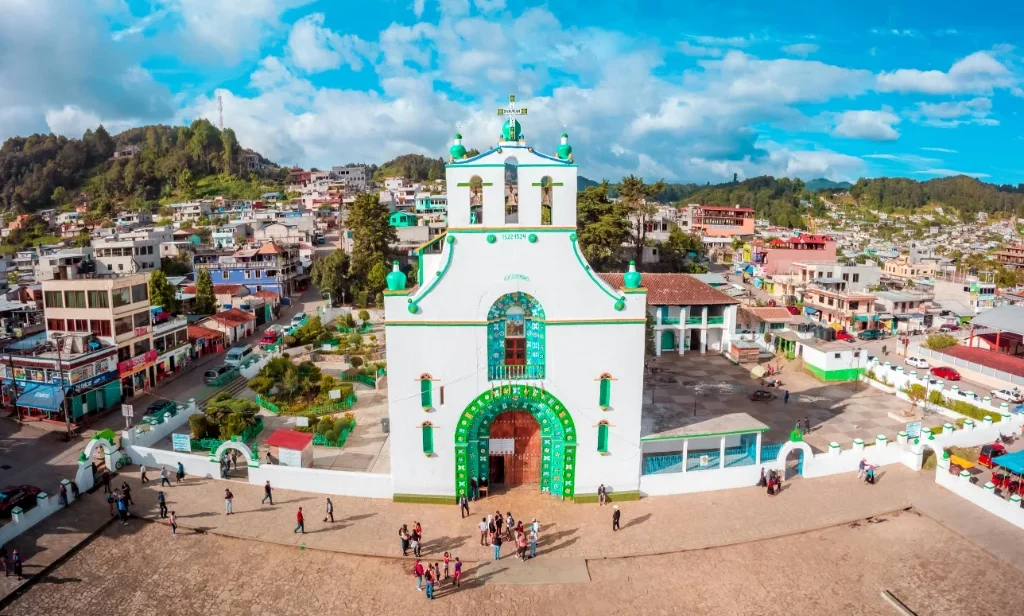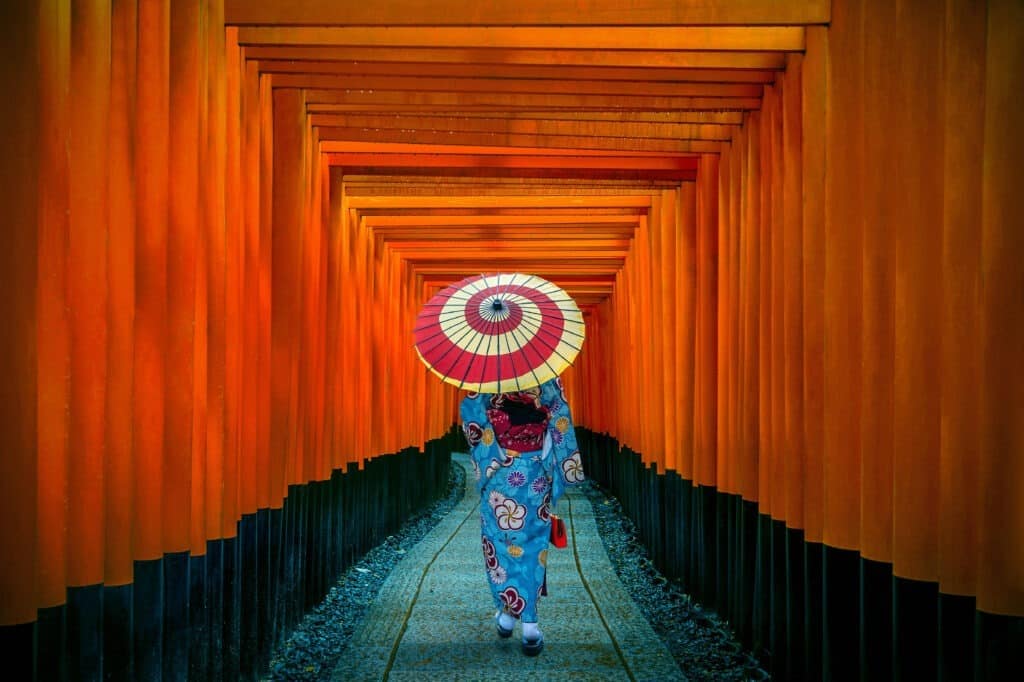Nestled in the verdant highlands of Chiapas, Mexico, San Juan Chamula is a beacon of indigenous culture and tradition.
Predominantly inhabited by the Tzotzil Maya people, this township offers a vivid glimpse into a way of life that has meticulously preserved its customs against the tides of modernization.
Known for its vibrant religious ceremonies and colorful market days, San Juan Chamula invites travelers to step into a world where ancient rituals and contemporary life blend seamlessly.
San Juan Chamula, A Unique Destination :
San Juan Chamula serves as a critical hub for understanding the social and spiritual fabric of the Tzotzil community.
It is not only a popular destination for cultural tourism but also a vital study field for anthropologists and historians.
Visiting San Juan Chamula provides an opportunity to witness firsthand the resilience of indigenous traditions, including their unique form of Catholicism interwoven with pre-Hispanic beliefs, making it a profound educational experience as well as a journey into the heart of Maya identity.
Where is San Juan Chamula located ?
San Juan Chamula is located in the central highlands of Chiapas, approximately 10 kilometers north of San Cristóbal de las Casas.
Nestled at an altitude of over 2,200 meters above sea level, Chamula offers panoramic views of the surrounding mountainous landscape, characterized by lush pine forests and rolling hills.
This geographic positioning enhances its scenic beauty and helps preserve its unique customs and traditions.
How to travel to San Juan Chamula ?
1. By Colectivo (Shared Taxi) :
Departing frequently from the Mercado Municipal in San Cristóbal de las Casas, colectivos are the most popular and economical way to reach Chamula.
The journey takes about 20 minutes.
It costs Approximately 20-25 MXN (1-1.5 USD) per person.
2. By Taxi :
Private taxis can be hired from anywhere in San Cristóbal de las Casas. This option provides more comfort and flexibility regarding departure times and pickup locations.
Expect to pay around 150-200 MXN (7-10 USD) for a one-way trip.
Various travel agencies in San Cristóbal offer half-day tours to San Juan Chamula, often combined with visits to other nearby indigenous villages such as Zinacantán.
These tours include guide services, which can enhance the understanding of local customs and history.
Tours generally cost between 400-600 MXN (23 -33 USD), depending on the group size and included services.
Cost-Effective Traveling Tips
- Always negotiate the price with taxi drivers before starting your journey.
- Traveling in a group can significantly reduce individual costs.
- Negotiate a combined trip with a taxi driver if planning to visit multiple locations in one day.
- Taking an early colectivo avoids the midday rush and allows more time to explore the area before larger tourist groups arrive.
Discover San Juan Chamula :
1. What is the history of San Juan Chamula ?
San Juan Chamula has a rich history interwoven with the indigenous Tzotzil Maya people.
Before the Spanish conquest in the 16th century, the area was part of a larger Maya civilization.
During the colonial period, the Spaniards introduced Catholicism, which the Chamulans blended with their indigenous religious practices.
After Mexico’s independence from Spain, San Juan Chamula faced various political and social changes, including land disputes and the struggle for indigenous rights.
Today, it is recognized for its strong adherence to traditional customs and has become a symbol of indigenous resilience and pride.
For an in-depth look at the history and culture of San Juan Chamula and its Tzotzil Maya community, visit Encyclopedia.com.
2. What are the local traditions in San Juan Chamula ?
San Juan Chamula is a living canvas of Tzotzil Maya traditions. The local form of Catholicism is heavily infused with indigenous beliefs.
The San Juan Bautista church, for instance, reflects Tzotzil reverence for nature, with pine needles covering the floor and offerings of candles, alcohol, and live chickens.
The weaving of textiles is a daily activity and a cultural expression in Chamula.
The town is also known for its autonomous governance system, rooted in traditional customs rather than federal and state laws.
Festivals and ceremonies, often tied to the agricultural calendar, play a crucial role in the social and spiritual life of Chamula.
3. What is the primary language in San Juan Chamula ?
The primary language spoken in San Juan Chamula is Tzotzil, a Mayan language.
While Spanish is also understood, Tzotzil remains the heart of communication in daily life, ceremonies, and rituals.
The preservation of Tzotzil reflects the community’s strong cultural identity and resistance to external influences.
4. Which religions are practiced in San Juan Chamula ?
Religious life in San Juan Chamula is a profound fusion of ancient Mayan customs and Christian elements.
The church of San Juan Bautista is the central religious site, where traditional Catholic icons are revered alongside Mayan symbols.
Rituals often include the use of candles, incense, and locally brewed spirits to invoke blessings for health and harvests.
Healing ceremonies performed by shamans are also significant, often involving live chickens to cleanse the sick of evil spirits.
5. How is the weather throughout the year in San Juan Chamula ?
San Juan Chamula experiences a temperate highland climate, characterized by mild temperatures year-round.
The average temperature ranges from 10°C (50°F) to 20°C (68°F), with colder conditions in the early mornings and evenings.
The region receives significant rainfall, particularly during the rainy season from June to October.
6. How is the geography like in San Juan Chamula ?
San Juan Chamula is situated in the highlands of Chiapas, surrounded by lush, rolling hills and dense forests.
The town’s elevation is approximately 2,200 meters (7,200 feet) above sea level, contributing to its cooler climate.
The terrain is predominantly hilly, with patches of dense forest and scattered agricultural fields, ideal for cultivating crops like corn, beans, and vegetables.
The region is rich in biodiversity, with pine and oak forests home to various bird species and small mammals.
7. What Type of clothing is recommended for visiting San Juan Chamula ?
When visiting San Juan Chamula, it’s important to dress in a manner that respects both the local climate and cultural norms. Here are some tips on what to wear:
- Layering clothing is recommended due to the variable weather conditions in the highlands. It allows for easy adjustment to changing temperatures throughout the day.
- A waterproof jacket or poncho is essential, especially during the rainy season, to stay dry and comfortable.
- Sturdy walking shoes are advised as the terrain in and around Chamula can be uneven and potentially slippery, especially in rural or undeveloped areas.
- It’s important to avoid wearing revealing clothing. Opt for modest attire such as long pants and shirts with sleeves, respecting the local customs and cultural sensitivity.
6 Tips to Find a Local Guide in San Juan Chamula :
Finding a knowledgeable guide can significantly enhance your experience in San Juan Chamula.
Here are some tips to help you find a local advisor:
Many travel agencies in San Cristóbal de las Casas offer guided tours to San Juan Chamula.
These tours often include transportation, a guide fluent in both Spanish and Tzotzil, and detailed explanations of the cultural and historical significance of the sites..
2. Chamula Market :
Once in San Juan Chamula, head to the central market area. Local guides often offer their services here.
Look for individuals wearing traditional Tzotzil attire who might be holding signs or simply approach you.
They are usually very knowledgeable about local customs, history, and spiritual practices.
3. Ask Your Accommodation :
If you’re staying in San Cristóbal de las Casas or nearby, ask the staff at your hotel or hostel for recommendations.
They often have trusted contacts with local guides and can arrange for a guided tour tailored to your interests.
4. Online Platforms :
Websites like TripAdvisor and Viator list tours and guides with reviews from previous visitors.
Booking a guide through these platforms can provide peace of mind and ensure quality service.
5. Local Cultural Centers :
Visit cultural centers in San Cristóbal de las Casas, such as Na Bolom or Casa Naahuatl, which often have connections with indigenous communities and can recommend reputable guides.
6. Community Recommendations :
Engage with local communities on travel forums like Reddit or Lonely Planet’s.
Travelers who have recently visited Chamula can provide firsthand recommendations and tips on finding a great guide.
6 Must-Do Activities in San Juan Chamula :
1. Visit The Local Church of San Juan Bautista :
Located in the heart of San Juan Chamula, the Church of San Juan Bautista offers a unique blend of local Mayan beliefs and Christian traditions, creating a profoundly spiritual destination.
Visitors are encouraged to come in the morning to avoid crowds and fully immerse in the experience for a small entrance fee of approximately 20 MXN.
Inside the church, the floor is covered with pine needles, and the air is thick with the scent of burning copal incense, creating a mystical ambiance enhanced by the soft glow of numerous candles.
This setting captivates visitors and stands as a living testament to the centuries-old fusion of faiths that reflect the community’s distinctive approach to spirituality.
Participating in or observing a traditional healing ceremony led by local shamans offers a profound insight into the spiritual life of the Tzotzil Maya.
These ceremonies often take place early in the morning or late in the evening around the San Juan Bautista Church.
Rituals include the use of candles, incense, and live chickens for cleansing and blessing.
While donations are appreciated, some ceremonies might have a set fee of approximately 100-200 MXN.
Visitors often describe these ceremonies as deeply moving and educational, providing a rare glimpse into indigenous spiritual practices.
2. Explore the San Juan Chamula Market :
The San Juan Chamula Market, located in the heart of the community, is a vibrant and bustling hub of activity, especially in the mornings and early afternoons.
This market is not just a place to shop but a sensory feast with colorful displays of handwoven textiles, traditional medicines, and intricately crafted items, all enveloped in rich aromas.
Visitors have the opportunity to engage directly with local artisans, learning about their crafts and the agricultural and artisanal traditions that have been preserved through generations.
Exploring this market offers a unique chance to immerse oneself in the local culture and take home distinctive souvenirs.
Entry is free, though the prices for goods vary, reflecting the deep economic and social significance of this vibrant marketplace.
3. Explore the Zapatista Monument :
The Zapatista Monument in San Juan Chamula serves as a significant reminder of the Zapatista movement, formally recognized as the Zapatista Army of National Liberation (EZLN).
This monument marks the beginning of their armed rebellion on January 1, 1994, a pivotal moment aimed at addressing the deep-seated issues of marginalization affecting indigenous communities in Chiapas, Mexico.
Led by the notable figure Subcomandante Marcos, also known as Rafael Guillén Vicente, the movement symbolizes a persistent fight for indigenous rights and autonomy, reflected through both armed and peaceful organizing.
Visitors to the monument can gain a deeper understanding of the movement’s impact and ongoing influence in the region, which continues to inspire global anti-globalization movements.
Exploring this site offers a poignant insight into the cultural and political narratives that have shaped the local community and beyond.
For those interested in learning more about the Zapatista movement and its historical context, additional resources can be found on ThoughtCo and Waging Nonviolence.
4. Participate in a Textile Weaving Workshop :
Local weaving in Chamula is celebrated as an ancient art, deeply embedded in the community’s cultural heritage.
Visitors can observe the meticulous process of creating vibrant textiles, providing a unique glimpse into the traditional skills of the Tzotzil weavers.
These practices are crucial for preserving ancient techniques and providing economic support, particularly empowering local women.
Learning traditional weaving techniques from local artisans offers a hands-on way to engage deeper with Chamula’s traditions.
Workshops are often conducted in local weaving settings, where participants can create their own woven piece.
Prices for these workshops vary but are generally affordable, facilitating a deeper connection and support for the local economy and artisanship.
Participants often find these workshops not only educational but also meaningful, as they help sustain the community’s economic and cultural vitality.
5. Hike Cerro de Chamula (Chamula Hill) :
Are you looking for a serene escape that combines breathtaking views with a rich spiritual heritage? Cerro de Chamula offers just that.
This historic hill, used for centuries by local Maya for rituals and meditation, provides a unique opportunity to connect with the natural and spiritual world of Chamula.
The hike is suitable at any time, but mornings or late afternoons are ideal for cooler temperatures and enhanced lighting.
Interested in a guided hike? Visit our recommended link here to book your hiking adventure with experienced local guides.
Not only will this enrich your experience with expert insights into the area’s history and culture, but it will also ensure a safe and memorable journey.
6. Experience a Local Festival :
Attending a local festival, such as the Feast of San Juan Bautista on June 24th or the Day of the Dead on November 1st and 2nd, is a highlight for many visitors.
These festivals are filled with traditional music, dances, and rituals, offering a deep dive into the cultural and spiritual life of Chamula.
Each festival has its unique charm, with the Feast of San Juan Bautista featuring elaborate decorations and processions, while the Day of the Dead involves decorated graves and family gatherings.
The exact dates and activities vary, so checking local schedules and guidelines is recommended.
For detailed information on participating in these events, please refer to our section “5 must-see Events and Festivals in San Juan Chamula (Calendar of Cultural Events)” where you can find additional details.
6 Unique Crafts and Products in San Juan Chamula:
1. Textiles and Weaving :
Chamula’s textile products are famed for their intricate designs and vibrant colors, created using traditional backstrap looms.
These textiles often feature motifs symbolic of local mythology and daily life, showcasing the weaver’s identity and skill.
Each piece reflects the cultural storytelling passed down through generations.
2. Wool Products :
The cool highland climate supports sheep farming, fostering a local wool industry.
The wool is hand-spun and dyed using natural substances, then woven or knitted into various items.
These wool products embody the practicality and ingenuity of Chamula artisans, highly sought after for their warmth and durability.
3. Leatherworking :
Leatherworking is another traditional craft in Chamula.
Artisans produce a range of leather goods, including belts, bags, and footwear, incorporating elements of local culture and nature.
These items are popular among both locals and tourists for their craftsmanship and cultural significance.
4. Amber Jewelry :
Amber from the nearby Chiapas mines is often fashioned into beautiful jewelry by local artisans.
Prized for its warm, translucent hues and supposed healing properties, amber jewelry is a standout product in Chamula markets.
5. Ceramics :
Pottery in Chamula is typically rustic, reflecting the earthy tones and textures of the local clay.
These ceramics range from functional cookware to decorative figurines, each molded and fired using techniques preserved over centuries.
6. Traditional Medicines :
The markets of Chamula are a treasure trove of traditional herbal medicines.
Local healers, known as ‘curanderos’, use these herbs to make remedies that reflect the community’s deep connection to and knowledge of their natural environment.
7 Signature Dishes and Restaurant Recommendations in San Juan Chamula :
1. Tienda y Comedor María :
Location : Central Chamula
Signature Dish : Traditional Tamales – Hand-prepared with local corn masa and filled with cheese, beans, or meats, wrapped in corn husks and steamed.
2. Mercado de Chamula :
Location : Main market area, Chamula
Signature Dish : Pozol – A traditional drink made from corn dough and water, often consumed plain or sweetened, sometimes with cocoa added.
3. Restaurante TierrAdentro :
Location : San Cristóbal de las Casas
Signature Dish : Sopa de Pan – A tomato-based broth enriched with spices, filled with layers of sliced bread, capers, and olives.
4. Comedor Mary :
Location : San Cristóbal de las Casas
Signature Dish : Caldo de Res – A hearty beef soup with large chunks of tender meat, potatoes, carrots, and a blend of local herbs.
5. El Fogón de Jovel :
Location : San Cristóbal de las Casas
Signature Dish : Asado de Puerco – A robust pork stew marinated in a sauce of red chili peppers, tomatoes, and traditional herbs.
6. Belil Sabores de Chiapas :
Location : San Cristóbal de las Casas
Signature Dish : Modern Tamales – Innovative tamales with unexpected ingredients like gourmet cheeses and exotic spices.
7. Trattoria Italiana :
Location : San Cristóbal de las Casas
Signature Dish : Wood-Fired Pizza – Handcrafted pizzas with a thin, crispy crust and a variety of fresh ingredients.
5 must-see Events and Festivals in San Juan Chamula (Calendar of Cultural Events):
1. Feast of San Juan Bautista (June 24th) :
This is the most significant festival in Chamula, dedicated to the patron saint, San Juan Bautista.
The town swells with activity as residents dress in traditional attire and participate in processions, dances, and ritual ceremonies.
The church becomes a focal point, decorated elaborately, showcasing unique syncretic religious practices that blend Mayan and Christian elements.
2. Carnival (Week leading up to Ash Wednesday):
A pre-Lenten celebration filled with traditional music, colorful costumes, and parades.
Chamula’s version of Carnival emphasizes cultural rituals, including the unique ‘chicken sacrifice’ for purification and blessing purposes, reflecting ancient Mayan practices.
3. Day of the Dead (November 1st and 2nd):
Known locally as ‘Dia de los Muertos,’ this festival honors deceased relatives with decorated graves, marigold flowers, candles, and offerings of food.
It reflects the profound respect for ancestors prevalent in Chamula culture, blending solemnity with celebration.
4. Feast of Saint Sebastian (January 20th):
Marked by traditional music, dance, and a fair-like atmosphere, devotees participate in processions carrying statues of Saint Sebastian, accompanied by fireworks and ritual offerings.
This festival showcases the endurance of Chamula’s religious traditions and community spirit.
5. Christmas (December 25th):
Observed with a blend of Christian and indigenous traditions, nativity scenes incorporate elements of Tzotzil beliefs and customs.
Special prayers, masses, and processions take place, alongside communal meals featuring traditional foods, reflecting the integration of Tzotzil and Christian practices.
5 Essential Tips you Need To Know Before Visiting San Juan Chamula :
Familiarize Yourself with Local Culture:
- Learn about the customs, traditions, and history of San Juan Chamula to appreciate the context of your visit.
- Stay hydrated and acclimatize in nearby San Cristóbal de las Casas to prepare for potential altitude sickness.
What to Bring:
- Pack appropriate clothing for mild to cool weather, and be prepared for rain.
- Carry sufficient cash in small denominations for your needs.
- Learn a few basic phrases in Tzotzil to enhance your interactions with locals.
Travel Insurance:
- Ensure your travel insurance covers medical issues and potential trip cancellations or interruptions.
- Ensure your travel insurance covers medical issues and potential trip cancellations or interruptions.
During Your Visit:
- Be cautious with photography, especially around the church and during rituals.
- Observe quietly and do not interrupt or participate in ceremonies unless explicitly invited.
- Stay on main paths and public areas unless accompanied by a local guide, which is recommended for deeper insights into the area’s history, culture, and customs.
Engage with the Community:
- Be adventurous with local foods but choose where you eat mindfully.
- Support the local economy by purchasing handicrafts directly from artisans.
Other Attractions Near San Juan Chamula :
The proximity of San Juan Chamula to San Cristóbal de las Casas makes it an accessible day trip for tourists.
Nearby attractions include:
Sumidero Canyon in Chiapas, Mexico, is an amazing natural site with cliffs towering up to 1,000 meters above the Grijalva River.
The canyon offers boat tours for close-up views of its wildlife and cliffs, as well as hiking trails and lookout points ideal for panoramic vistas.
This diverse range of activities makes Sumidero Canyon a captivating destination for nature lovers and adventurers alike.
The Montebello Lakes, located in Chiapas, Mexico, are a stunning natural attraction nestled in a UNESCO Biosphere Reserve.
The park features over 59 multi-colored lakes, each varying in hues from turquoise to deep blue, set amidst lush pine forests near the Guatemala border.
Visitors can enjoy activities such as rafting, kayaking, and serene boat rides on the lakes, or take leisurely hikes around the area to appreciate the diverse flora and fauna.
This picturesque setting is perfect for those looking to immerse themselves in nature and partake in tranquil yet engaging outdoor activities.
Zinacantán, located in the highlands of Chiapas, Mexico, is a vibrant community known for its strong Tzotzil Maya cultural heritage.
The town is famous for its beautiful handwoven textiles and intricate floral embroidery, crafted by local artisans using traditional backstrap looms.
Visitors can explore the local textile cooperatives to see artisans at work and purchase unique handmade items.
Zinacantán also offers cultural experiences such as participating in local festivals and tasting traditional foods, making it a rich destination for those interested in indigenous cultures and crafts.
FAQs: Top 10 Most Asked Questions About San Juan Chamula :
San Juan Chamula is known for its strong indigenous identity, unique religious practices blending pre-Hispanic and Christian elements, and its vibrant traditional market.
Yes, tourists can visit the Church of San Juan Bautista, but photography inside is strictly prohibited, and visitors are expected to maintain a respectful demeanor.
Main cultural practices include religious syncretism, traditional weaving, and local governance systems following ancient Tzotzil customs.
Yes, it is generally safe, but visitors should be aware of cultural sensitivities, especially around photography and dress code, and adhere to general travel safety advice.
San Juan Chamula is about a 20-minute drive from San Cristóbal de las Casas. Visitors can take a colectivo (shared taxi) from the Mercado Municipal in San Cristóbal.
Visitors should wear modest and respectful clothing, avoiding shorts and sleeveless tops, especially when visiting religious sites. Dressing in layers is recommended due to the variable weather.
The primary language spoken is Tzotzil, a Mayan language. Spanish is also widely understood.
Always ask for permission before taking photos of people, and respect any prohibitions, especially during religious ceremonies and inside the church.
The best time to visit is during one of the many festivals, such as the Feast of San Juan Bautista on June 24th, to experience the town in full cultural expression.
Try local dishes like tamales, pozol (a traditional corn-based drink), and other regional specialties available in the local market or small eateries.
5 General Safety Tips for Visiting San Juan Chamula
- Understanding and respecting local customs, especially within the church and during ceremonies, is crucial.
- Photography is strictly prohibited inside the church and during religious ceremonies.
- Stay on established paths and areas commonly frequented by tourists.
- If possible, visit San Juan Chamula as part of a guided tour or with a group.
- Keep your valuables secure and maintain a low profile in terms of displaying wealth.
- Stay hydrated and acclimatize in nearby San Cristóbal de las Casas before visiting Chamula.

